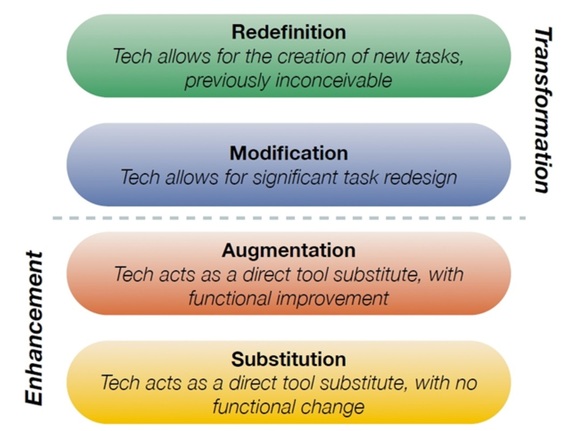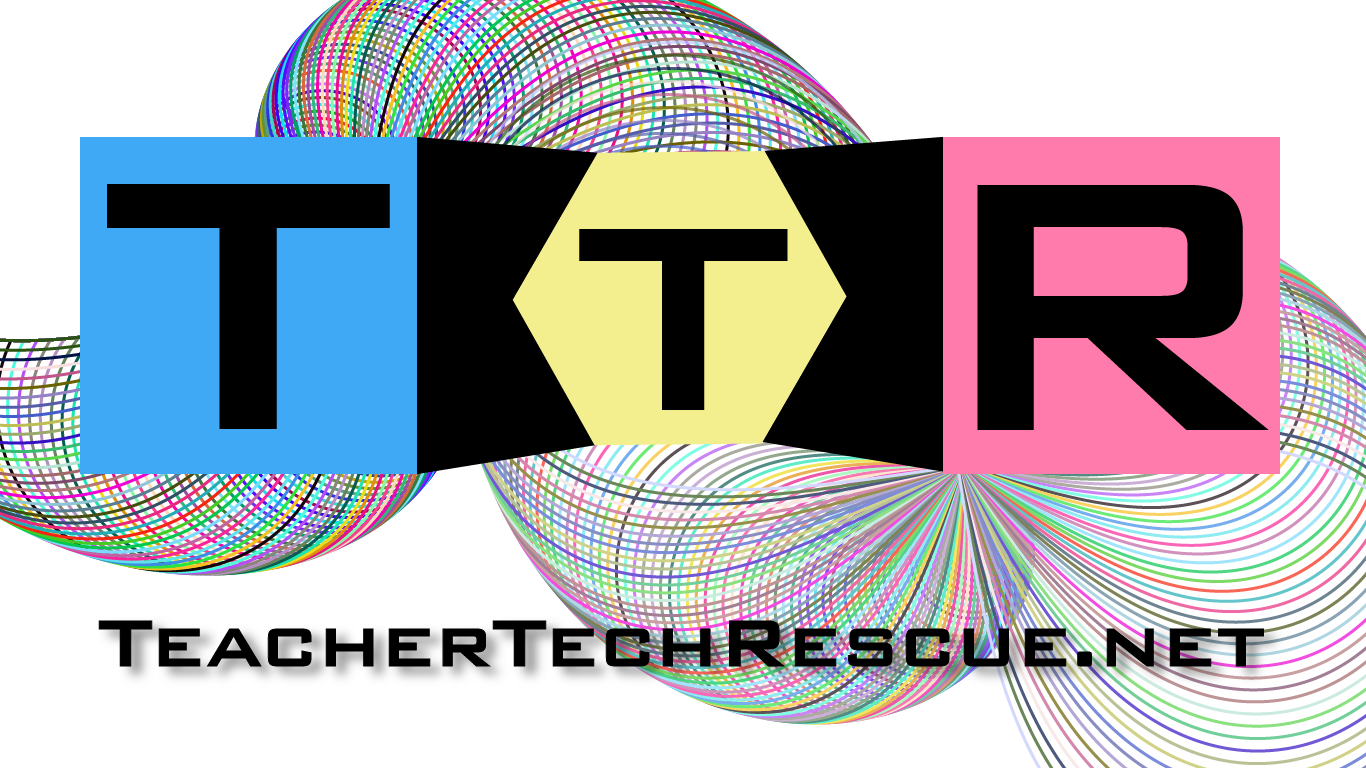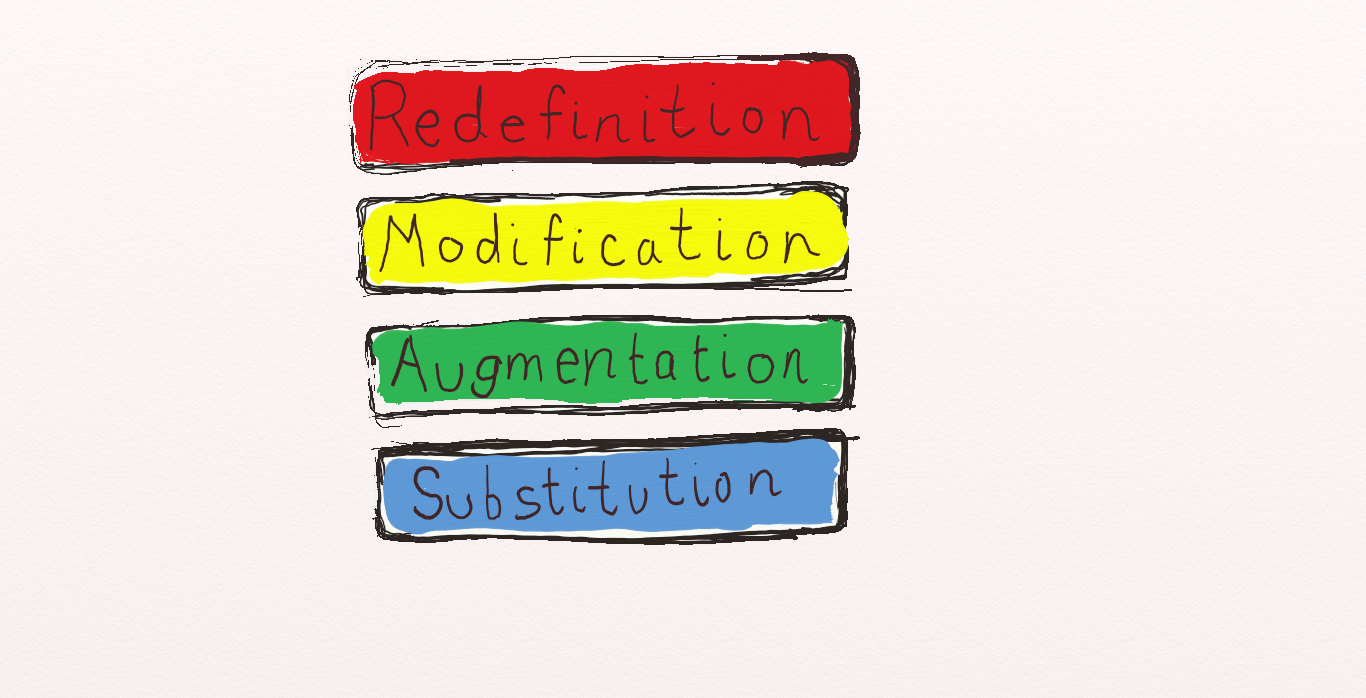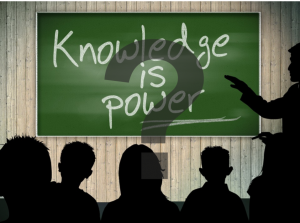In the world of education, we are bombarded with models at every pass. Education is filled with so many combinations of alphabet soup letters that it makes it almost impossible to digest, especially for new teachers. Consider Bloom’s Taxonomy, for instance, a tried and true model that allows us to classify our strategies. Now, take a look at the Depth of Knowledge model that has so recently become popular. In essence, these are too similar, so much so that I have trouble deciphering the added value in learning this model, because it seems like it is a repackaged acronym that represents something very similar. What I loved most about being introduced to the SMAR model is that it is truly unique, extremely valuable, and not all that time consuming to understand and apply. SAMR is a fresh taste of modern educational pedagogy that leaves you satisfied and craving more. It is not some knock off brand of alphabet soup that you are being forced to consume.
The SAMR model stands for Substitution, Modification, Augmentation, and Redefinition. These are not revolutionary concepts in education, as people have been reaching the levels of redefinition in classrooms for centuries. What is special or unique about the SAMR model is that it allows us to focus our aim and push to the next level through the integration of technology. It is not a balance of bloom’s taxonomy and tech skills, it is the fusion of the two. Technology allows us to reach new heights that have historically been limited by obstacles like cost, accessibility, requisite training and intimidation. Take a look at the model below and see if you can start to make connections to the model based on a recent learning or teaching experience that included the use of technology.

Image: Creation of Dr. Ruben Puentedura, Ph.D. www.hippasus.com/rrpweblog/
Now that you can visualize the layers and see where technology falls into this model, you can hopefully see where the AIM is set. Notice that both lower levels, Substitution and Augmentation, are categorized as “Enhancement.” While Modification and Redefinition are considered “Transformation.” When using the SAMR model, I tend to look at how I might categorize a learning experience, then I attempt to move my way up the model, always aiming for transformation. The value in the model comes from its ability to push us out of our comfort zone as an educator and into a transformative tech based modality that extends far beyond substitution. However, let it be stated plainly, there is nothing wrong with taking your first steps as a technology using educator into the substitution category, because there is still more value in teaching a lesson where the technology acts as a substitution than there is in doing things as they had been done for the past 50 years.
In the following SAMR Video, you will be able to see examples, standards alignment, and advice for how to use this simple model. What is particularly interesting about the model is that it is relative to the experiences of the person employing it. For instance, the idea of using video as an assessment of learning might sound like augmentation or maybe modification to a young student teacher who was likely using video in this way while they were in high school just a few years ago. However, to a veteran teacher of 30 some odd years who never formally experienced video development as a learning tool, it would almost certainly seem to fit into either Modification or Redefinition. Remember, the value in this model comes from aiming for the top. So, there is a lot of gray in here when trying to clearly classify a specific lesson as one step of the model or another due to the subjective nature and different experiences of educators using it.
Now for the big question: What are you going to do with the model? I would discourage you from trying to go back into every lesson you have created and adding in a SAMR level classification just yet. It might be best to start with where you want to go with your own interests, your tech skill set and what you intend to teach. I find that for tech novices, you need to start by building confidence in technology first. A few ideas for getting started with technology in the classroom:
What are your interests?
From my experience, and what I have observed over the past decade in the classroom, teachers thrive when they are in their element. Passion is a very powerful part of everything we attempt in the classroom. It is the P’s in Dave Burgess’ Teach Like a PIRATE acronym. If you are not passionate about what you are teaching, then odds are, your student most certainly won’t be. Start with something you really want to teach, not necessarily 1.1 of the content standards or common core.
What technologies do you see others using that have piqued your curiosity?
If you are a great educator, you are talking with your coworkers, departments and hopefully a larger community within your PLN on a regular basis (Upcoming Blog: Developing Your PLN). Visit other classrooms, connect with those you aspire to teach like and although you may not feel like you ever reach the level of rockstar teacher, you can rest assured your journey to that level will certainly make your job as an educator more fruitful and enjoyable.
What desperately needs to be revamped or redesigned as a learning experience?
If you have never had a lesson flop, you are either very new to education or you are not self-assessing very well. Most of us are constantly noticing where we need to improve. Part of teaching is taking risks, and it is important to note that failure is an undesirable but necessary outcome for development as an educator. Think back to a lesson you recently felt dissatisfied with, and if you are brand new to teaching, think about a flop that you remember from your days as a student. Now, consider how you might be able to enhance or transform that lesson through the conduit of technology.
What are you already a master of?
For some veteran teachers, after many years of teaching the same content, there are certain lessons you could do blindfolded while in (insert your least favorite yoga pose) position. Sometimes these lessons need a little seasoning to keep you pushing forward and to keep you sharp and current. Try and envision a remix of what you have already that infuses technology and kicks your already masterful lesson through the roof.
What are the limitations of your classroom, school or population?
It is undeniably every technophobe’s favorite excuse: “We don’t have _____________! So I am stuck teaching with the textbook.” It is 2017, do what it takes and to MAKE IT HAPPEN! Collect old devices from parents and staff, set up a gofundme or a donorschoose.org, beg and plead with your administration. Once you have the basic infrastructure, get to know the limitations of your devices or tech tools. Check bandwidth, version compatibility, wifi filters, etc.
The key is to always aim for transformation! Even if you don’t get there, you will be in a better place for trying.


